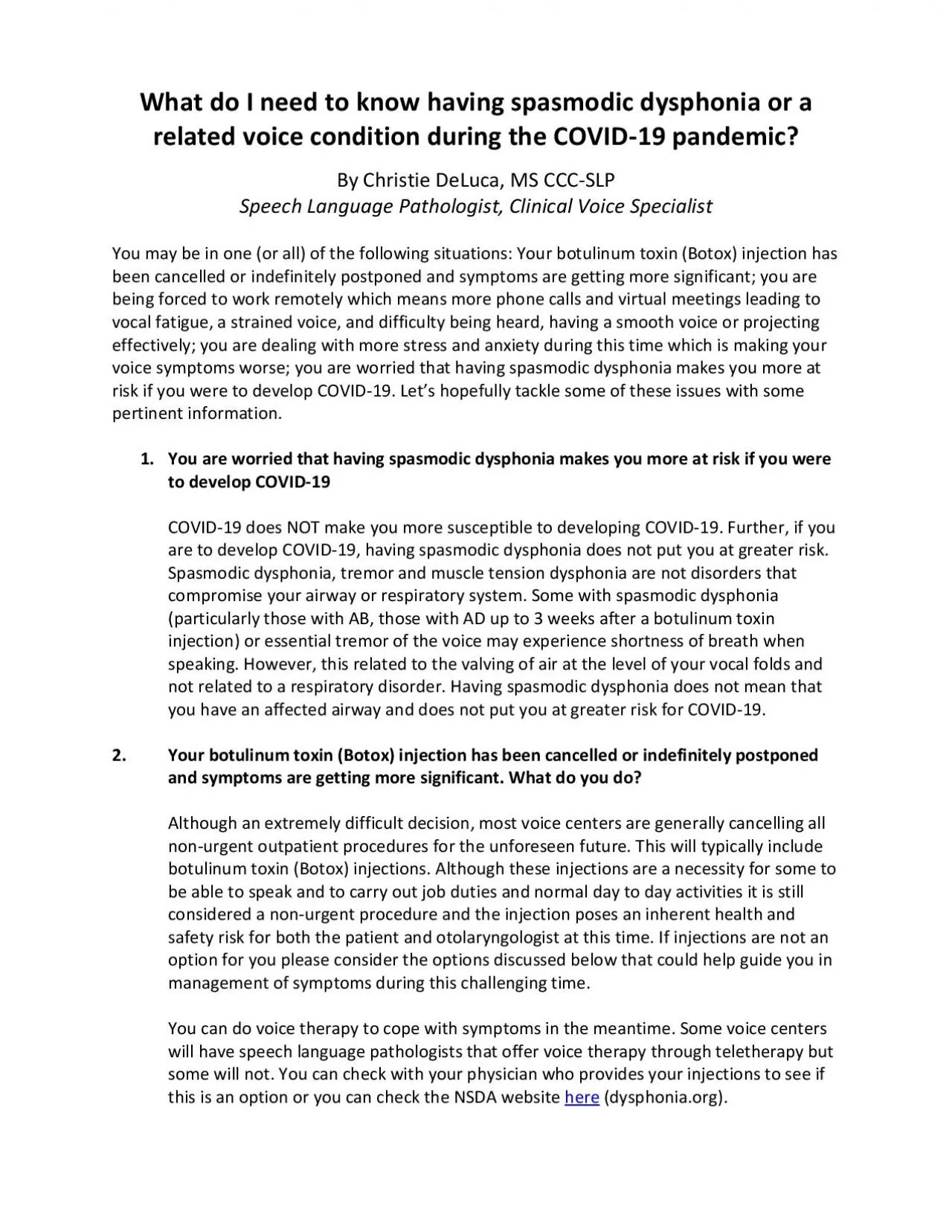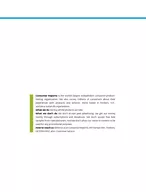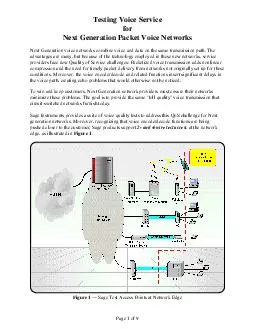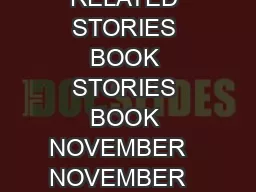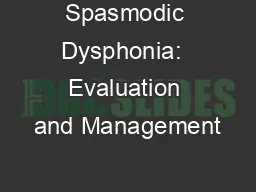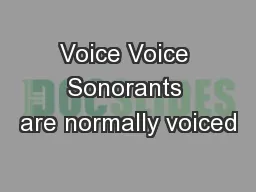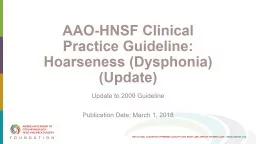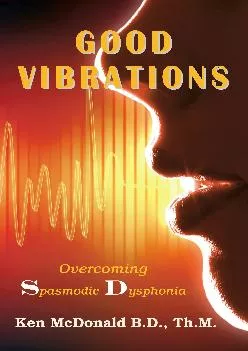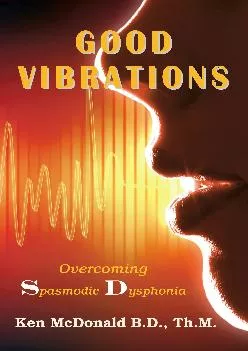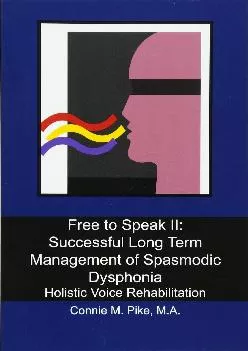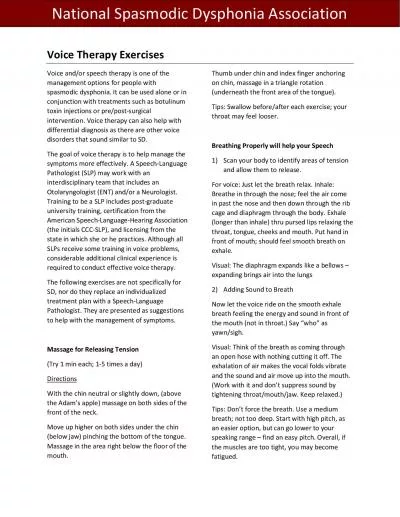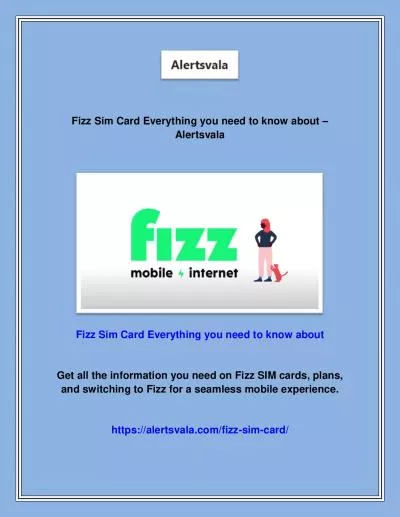PDF-What do I need to know having spasmodic dysphonia related voice condit
Author : rose | Published Date : 2022-09-06
dysphoniaorg If youcannot find a speech language pathologist specialized voice therapist who provides these services or cannot get access to teletherapy right you
Presentation Embed Code
Download Presentation
Download Presentation The PPT/PDF document "What do I need to know having spasmodic ..." is the property of its rightful owner. Permission is granted to download and print the materials on this website for personal, non-commercial use only, and to display it on your personal computer provided you do not modify the materials and that you retain all copyright notices contained in the materials. By downloading content from our website, you accept the terms of this agreement.
What do I need to know having spasmodic dysphonia related voice condit: Transcript
Download Rules Of Document
"What do I need to know having spasmodic dysphonia related voice condit"The content belongs to its owner. You may download and print it for personal use, without modification, and keep all copyright notices. By downloading, you agree to these terms.
Related Documents

